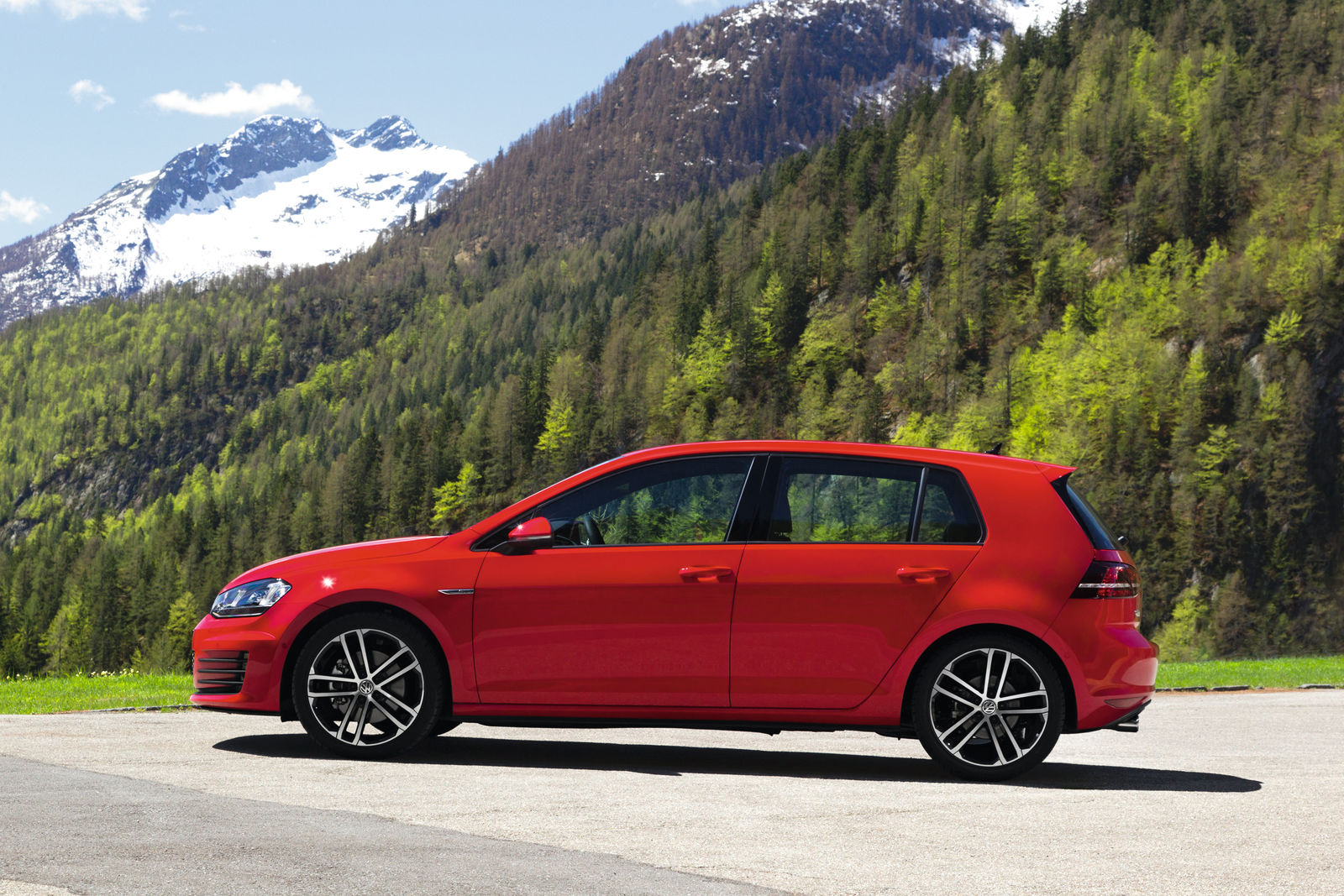The new Golf GTD is based on the new modular transverse matrix (MQB). This acronym MQB signifies a completely new design layout of the Golf (and of many other Volkswagen Group models). And this new layout is perceived as a very welcome present by Group designers, because they can now implement entirely new vehicle proportions. The Golf GTD is a superb example of this.
More dynamic proportions. Compared to the previous model, the wheelbase was extended 53 mm to 2,631 mm, but at the same time the front overhang was shortened 12 mm. In parallel, the A-pillar "wandered" further towards the rear, which makes the bonnet longer and visually shifts the entire vehicle cabin rearwards. This "cab-backward effect" makes the Golf GTD more of a premium class car than a compact class car. In addition, the height of the GTD was reduced 27 mm to 1,442 mm. The car's length grew 55 mm to 4,268 mm now, and the width grew 13 mm to 1,799 mm. Many values that add up to an important result: the proportions of the new Golf GTD made unmistakable gains in dynamics.
Visually, the Golf GTD and the new GTI look like twins, with just a few individual nuances. The differentiating characteristics are the red trim strip on the GTI radiator grille compared to the chrome strip on the GTD, which now extends into the headlights. At the rear, meanwhile, the GTD can be made out by the dual tailpipes on the left side (in chrome); the GTI has one tailpipe on the left and one on the right. On the sides, the two sports cars differ in their alloy wheels. The Golf GTD is exclusively equipped with new 17-inch wheels in "Curitiba" design as standard; optional wheels include the new 18-inch wheels ("Nogaro" type) and the 19-inch wheels ("Santiago" type) that are also offered for the GTI.
Typical of both models: the additional air inlet openings in the front spoiler; a honeycomb structure of the air inlet screens; vertical fog lights; xenon headlights with an unmistakable light signature; the larger rear spoiler.
Front end in detail. In the front area with its LED fog lights (optional) that were customised to the GTD, there is another strong and significant GTD element that was completely reinterpreted: the chrome line of the GTD radiator grille. In the latest GTD generation, this line terminates the lower edge of the radiator grille, but then it is further extended to the left and right into the housings of the standard bi-xenon headlights. So, the line runs across the entire width of the front end; as a horizontal element it runs parallel to the bonnet seam and the bumper.
At the very bottom of the bumper, beneath the cross panel painted in body colour, the black air inlet (with its honeycomb structure screen) is now no longer surrounded by another black area, rather by surfaces painted in body colour. In this way, the air inlet makes a stronger impression; simultaneously, the three lateral, high-gloss black aerodynamic fins beneath the headlights also terminate the front end. Another detail fitting in with the precisely contoured styling is the black splitter (lower edge of the front spoiler), which is familiar from motorsport.
Side profile in detail. In a side view, the sportiest Golf diesel can be readily made out by the even longer look of its roof section due to the larger rear spoiler and by the alloy wheels specially designed for the GTD. Even in side profile, the light contours of the optional LED daytime running lights and the standard LED rear lights stand out.
In addition, the car is marked by new dynamic proportions and styling that is more precisely formed than ever. Below the door handles, we have integrated the now clearly visible and very sharp character line. While this line is interrupted by the wheel arches, it is otherwise continuous and is stylistically echoed in the chrome trim strips of the radiator grille and headlights and at the rear of the car in the white lateral trim strips of the rear light clusters. Set deep down all the way around, this line lowers the visual centre of gravity and gives the Golf GTD a more solid stance on the road in combination with the standard sport suspension. Another striking element is the new line along the side shoulder directly below the windows. This line begins at the front in the headlight, and then glides under the wing mirror, which is positioned right on the line, all the way through to the rear side window, underscoring the premium proportions of the Golf.
Just as characteristic of the car's side profile is the unmistakable C-pillar. On the previous model, the character line still cut through the C-pillar. This is no longer the case on the new Golf GTD. The C-pillar runs along one homogenous surface from the start of the roof all the way to the rear wheel arch. Above the wheel arch, however, it picks up more strongly the entire width of the car – and as a result, when viewed from behind or diagonally from the rear, the new Golf GTD looks more solid and powerful. For the first time, in addition to the GTD badges at the front and rear, the sporty Volkswagen also has badge plates with the GTD logo on the front wings at the height of the character line.
Rear section in detail. The new roof spoiler is specially designed for the GTD; it is considerably larger than its counterpart on Golf versions with less powerful engines; it is integrated to be flush to the boot lid and the body. The spoiler, painted in body colour, seamlessly transitions into black aerodynamic elements on the sides of the boot lid. Another feature that is designed in black, along with the aerodynamic elements and the front splitter, is the diffuser at the rear.
